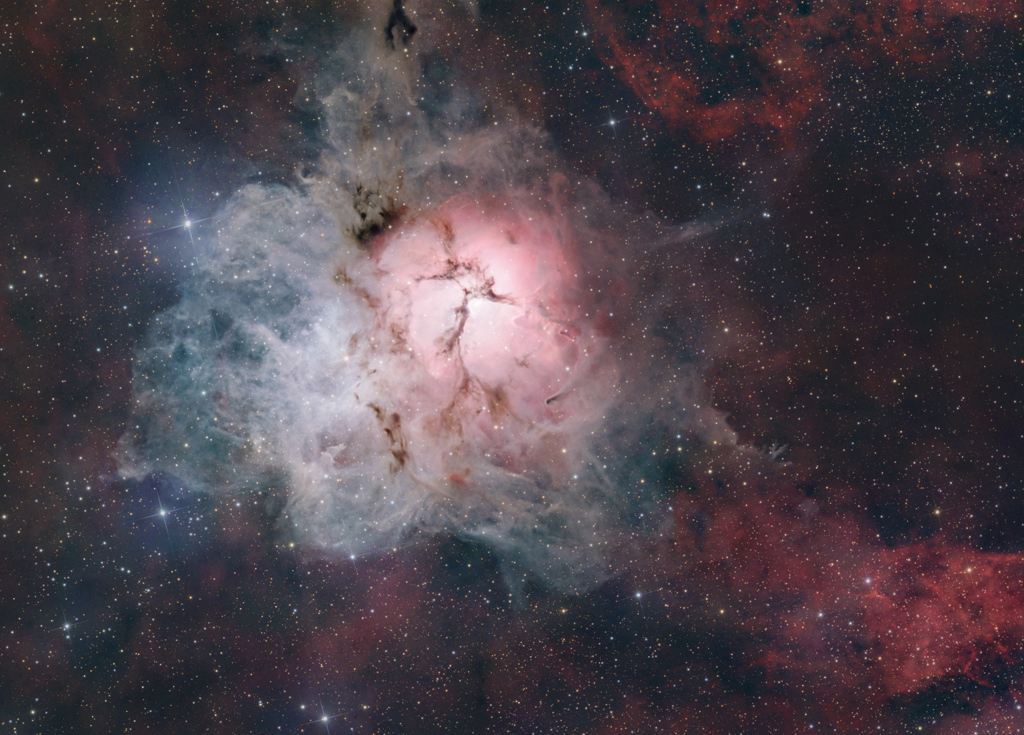Nombre total de pages vues
11/08/2024
ASTRONOMIE - Les étoiles filantes des Perséides en août 2024
ASTRONOMY - Animation: Perseid Meteor Shower
2024 August 11
Visualization Credit: Ian Webster; Data: NASA, CAMS, Peter Jenniskens (SETI Institute)
Explanation: Where do Perseid meteors come from? Mostly small bits of stony grit, Perseid meteoroids were once expelled from Comet Swift-Tuttle and continue to follow this comet's orbit as they slowly disperse. The featured animation depicts the entire meteoroid stream as it orbits our Sun. When the Earth nears this stream, as it does every year, the Perseid Meteor Shower occurs. Highlighted as bright in the animation, comet debris this size is usually so dim it is practically undetectable. Only a small fraction of this debris will enter the Earth's atmosphere, heat up and disintegrate brightly. Tonight and the next few nights promise some of the better skies to view the Perseid shower as well as other active showers because the first quarter moon will be absent from the sky from midnight onward.
10/08/2024
INVENTIONS DE DEMAIN - La route mangeuse de smog
ASTRONOMY - The Light, Dark, and Dusty Trifid
Image Credit & Copyright: Robert Edelmaier and Gabriele Gegenbauer
Explanation: Messier 20, popularly known as the Trifid Nebula, lies about 5,000 light-years away toward the nebula rich constellation Sagittarius. A star forming region in the plane of our galaxy, the Trifid does illustrate three different types of astronomical nebulae; red emission nebulae dominated by light from hydrogen atoms, blue reflection nebulae produced by dust reflecting starlight, and dark nebulae where dense dust clouds appear in silhouette. The reddish emission region, roughly separated into three parts by obscuring dust lanes, is what lends the Trifid its popular name. The cosmic cloud complex is over 40 light-years across and would cover the area of a full moon on planet Earth's sky. But the Trifid Nebula is too faint to be seen by the unaided eye. Over 75 hours of image data captured under dark night skies was used to create this stunning telescopic view.
09/08/2024
SANTé/MEDECINE - Les moustiques attaquent ? Techniques naturelles vont vous en débarrasser (3/3)
ASTRONOMY - A Perseid Below
2024 August 9
Image Credit: Ron Garan, ISS Expedition 28 Crew, NASA
Explanation: Denizens of planet Earth typically watch meteor showers by looking up. But this remarkable view, captured on August 13, 2011 by astronaut Ron Garan, caught a Perseid meteor by looking down. From Garan's perspective on board the International Space Station orbiting at an altitude of about 380 kilometers, the Perseid meteors streak below, swept up dust from comet Swift-Tuttle. The vaporizing comet dust grains are traveling at about 60 kilometers per second through the denser atmosphere around 100 kilometers above Earth's surface. In this case, the foreshortened meteor flash is near frame center, below the curving limb of the Earth and a layer of greenish airglow, just below bright star Arcturus. Want to look up at a meteor shower? You're in luck, as the 2024 Perseid meteor shower is active now and predicted to peak near August 12. With interfering bright moonlight absent, this year you'll likely see many Perseid meteors under clear, dark skies after midnight.
08/08/2024
SANTé/MEDECINE - Les moustiques attaquent ? Techniques naturelles vont vous en débarrasser (2/3)

ASTRONOMY - Periodic Comet Swift-Tuttle
Image Credit & Copyright: Gerald Rhemann
Explanation: A Halley-type comet with an orbital period of about 133 years, Comet 109P/Swift-Tuttle is recognized as the parent of the annual Perseid Meteor Shower. The comet's last visit to the inner Solar System was in 1992. Then, it did not become easily visible to the naked eye, but it did become bright enough to see from most locations with binoculars and small telescopes. This stunning color image of Swift-Tuttle's greenish coma, long ion tail and dust tail was recorded using film on November 24, 1992. That was about 16 days after the large periodic comet's closest approach to Earth. Comet Swift-Tuttle is expected to next make an impressive appearance in night skies in 2126. Meanwhile, dusty cometary debris left along the orbit of Swift-Tuttle will continue to be swept up creating planet Earth's best-known July and August meteor shower.
07/08/2024
SANTé/MEDECINE - Les moustiques attaquent ? Techniques naturelles vont vous en débarrasser (1/3)
INVENTIONS DE DEMAIN - Tout le crédit sur une même carte

ASTRONOMY - The Surface of Titan from Huygens
2025 November 30 The Surface of Titan from Huygens Image Credit: ESA , NASA , JPL , U. Arizona , Huygens Lander Explanation: If you c...

-
2022 September 26 All the Water on Planet Earth Illustration Credit: Jack Cook, Adam Nieman, Woods Hole Oceanographic Institution ; Data ...
-
2025 May 11 The Surface of Venus from Venera 14 Image Credit: Soviet Planetary Exploration Program , Venera 14 ; Processing & Copyri...








